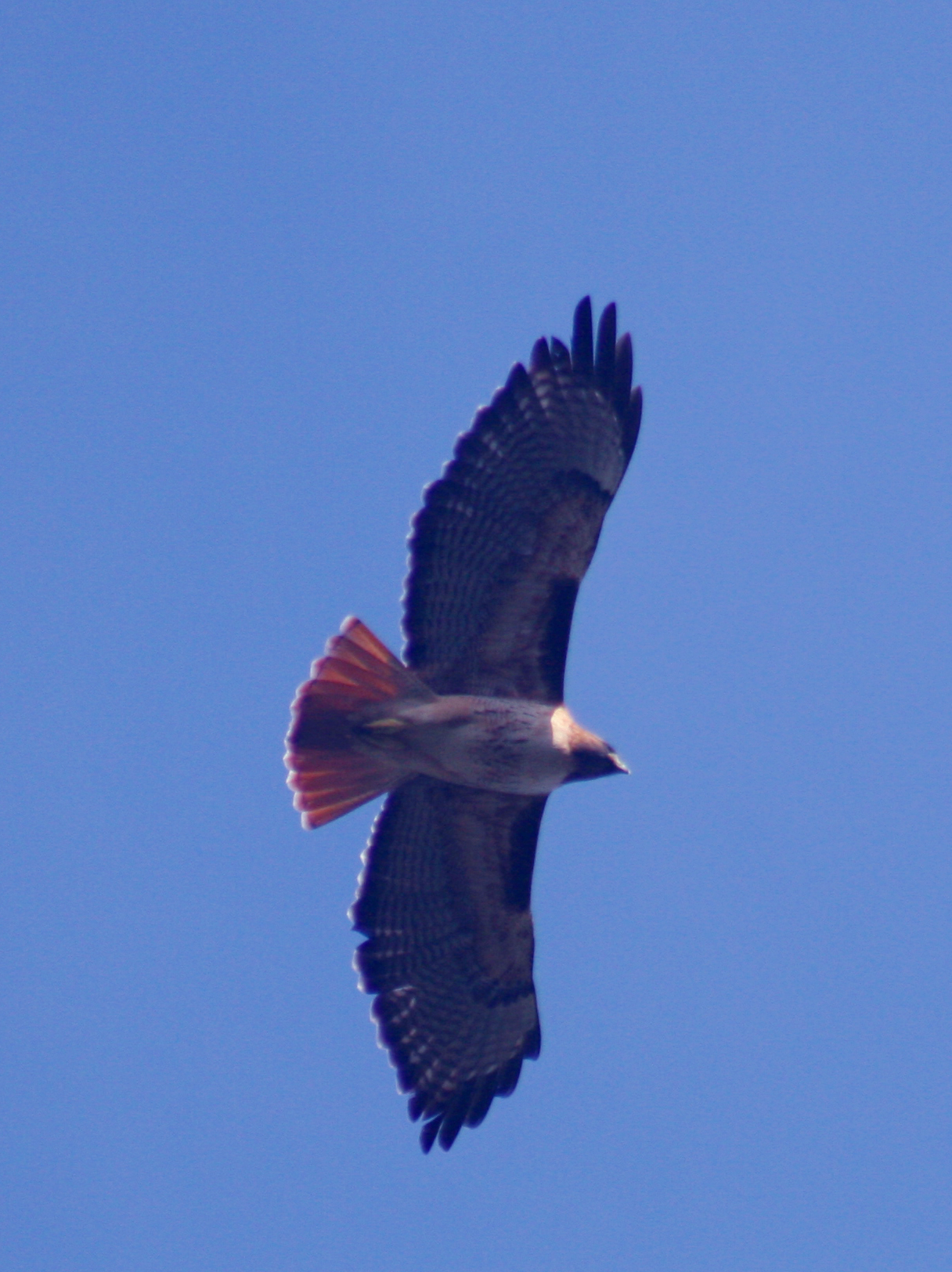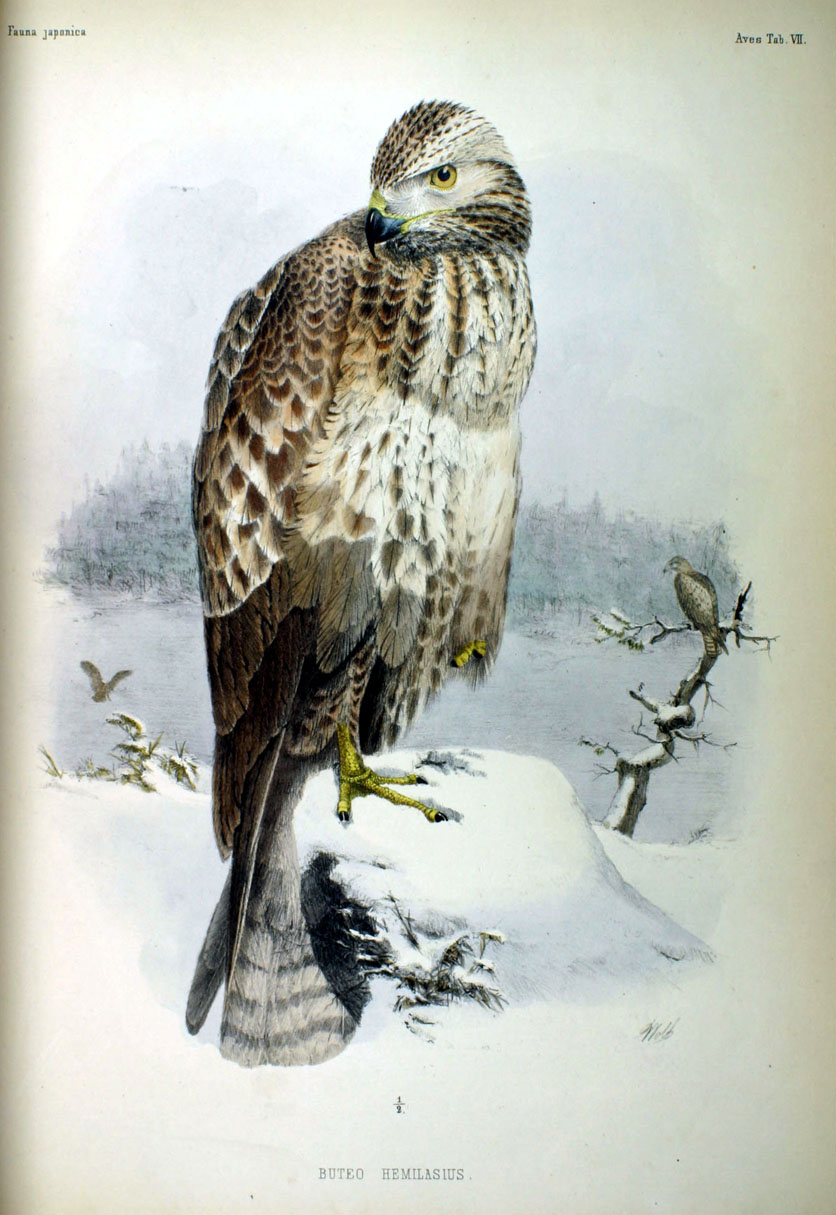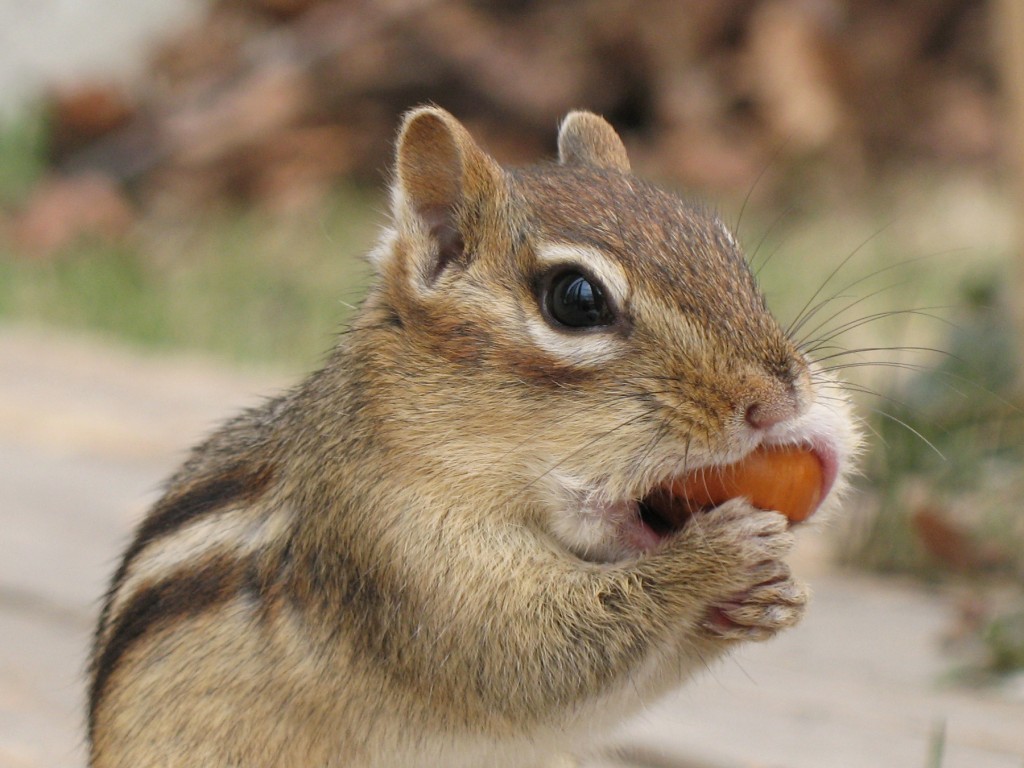|
Buteo
''Buteo'' is a genus of medium to fairly large, wide-ranging raptors with a robust body and broad wings. In the Old World, members of this genus are called " buzzards", but "hawk" is used in the New World (Etymology: ''Buteo'' is the Latin name of the common buzzard). As both terms are ambiguous, buteo is sometimes used instead, for example, by the Peregrine Fund. Characteristics Buteos are fairly large birds. Total length can vary from and wingspan can range from . The lightest known species is the roadside hawk, at an average of although the lesser known white-rumped and Ridgway's hawks are similarly small in average wingspan around , and average length around in standard measurements. The largest species in length and wingspan is the upland buzzard, which averages around in length and in wingspan. The upland is rivaled in weight and outsized in foot measurements and bill size by the ferruginous hawk. In both of these largest buteos, adults typically weigh over ... [...More Info...] [...Related Items...] OR: [Wikipedia] [Google] [Baidu] |
Red-tailed Hawk
The red-tailed hawk (''Buteo jamaicensis'') is a bird of prey that breeds throughout most of North America, from the interior of Alaska and northern Canada to as far south as Panama and the West Indies. It is one of the most common members within the genus of ''Buteo'' in North America or worldwide. The red-tailed hawk is one of three species colloquially known in the United States as the " chickenhawk", though it rarely preys on standard-sized chickens. The bird is sometimes also referred to as the red-tail for short, when the meaning is clear in context. Red-tailed hawks can acclimate to all the biomes within their range, occurring on the edges of non-ideal habitats such as dense forests and sandy deserts.Preston, C. R. (2000). ''Red-tailed Hawk''. Stackpole Books. The red-tailed hawk occupies a wide range of habitats and altitudes, including deserts, grasslands (from small meadows to the treed fringes of more extensive prairies), coniferous and deciduous forests, agricultur ... [...More Info...] [...Related Items...] OR: [Wikipedia] [Google] [Baidu] |
Oligocene
The Oligocene ( ) is a geologic epoch of the Paleogene Period and extends from about 33.9 million to 23 million years before the present ( to ). As with other older geologic periods, the rock beds that define the epoch are well identified but the exact dates of the start and end of the epoch are slightly uncertain. The name Oligocene was coined in 1854 by the German paleontologist Heinrich Ernst Beyrich from his studies of marine beds in Belgium and Germany. The name comes from the Ancient Greek (''olígos'', "few") and (''kainós'', "new"), and refers to the sparsity of extant forms of molluscs. The Oligocene is preceded by the Eocene Epoch and is followed by the Miocene Epoch. The Oligocene is the third and final epoch of the Paleogene Period. The Oligocene is often considered an important time of transition, a link between the archaic world of the tropical Eocene and the more modern ecosystems of the Miocene. Major changes during the Oligocene included a global expansion o ... [...More Info...] [...Related Items...] OR: [Wikipedia] [Google] [Baidu] |
Upland Buzzard
The upland buzzard (''Buteo hemilasius'') is a species of bird of prey in the family Accipitridae. The largest species of the ''Buteo'' genus, this buzzard lives in mountainous grassy and rocky areas in areas of Central Asia, northern South Asia and East Asia from Kazakhstan to Korea.Ferguson-Lees, J., & Christie, D. A. (2001). ''Raptors of the World''. Christopher Helm, London, UK. The upland buzzard is Bird migration, migratory but typically covers a short distance apparently to avoid Snow, snow cover that may hamper prey capture.Bildstein, K. L. & Zalles, J. I. (2005). ''Old World versus New World long-distance migration in Accipiters, Buteos, and Falcons: the interplay of migration ability and global biogeography''. Birds of Two Worlds: The Ecology and Evolution of Migration. The Johns Jopkins University Press, Baltimore, 154-167.Orta, J. and G. M. Kirwan (2020). ''Upland Buzzard (Buteo hemilasius)'', version 1.0. In Birds of the World (J. del Hoyo, A. Elliott, J. Sargatal, D. ... [...More Info...] [...Related Items...] OR: [Wikipedia] [Google] [Baidu] |
Chipmunk
Chipmunks are small, striped rodents of the family Sciuridae. Chipmunks are found in North America, with the exception of the Siberian chipmunk which is found primarily in Asia. Taxonomy and systematics Chipmunks may be classified either as a single genus, ''Tamias'', or as three genera: ''Tamias'', of which the eastern chipmunk (''T. striatus'') is the only living member; ''Eutamias'', of which the Siberian chipmunk (''E. sibiricus'') is the only living member; and ''Neotamias'', which includes the 23 remaining, mostly western North American, species. These classifications were treated as subgenera due to the chipmunks' morphological similarities. As a result, most taxonomies over the twentieth century have placed the chipmunks into a single genus. However, studies of mitochondrial DNA show that the divergence between each of the three chipmunk groups is comparable to the genetic differences between ''Marmota'' and ''Spermophilus'', so the three genera classifications have b ... [...More Info...] [...Related Items...] OR: [Wikipedia] [Google] [Baidu] |
Squirrel
Squirrels are members of the family Sciuridae, a family that includes small or medium-size rodents. The squirrel family includes tree squirrels, ground squirrels (including chipmunks and prairie dogs, among others), and flying squirrels. Squirrels are indigenous to the Americas, Eurasia, and Africa, and were introduced by humans to Australia. The earliest known fossilized squirrels date from the Eocene epoch, and among other living rodent families, the squirrels are most closely related to the mountain beaver and to the dormice. Etymology The word ''squirrel'', first attested in 1327, comes from the Anglo-Norman which is from the Old French , the reflex of a Latin word , which was taken from the Ancient Greek word (; from ) 'shadow-tailed', referring to the long bushy tail which many of its members have. The native Old English word for the squirrel, , survived only into Middle English (as ) before being replaced. The Old English word is of Common Germanic origin, cognat ... [...More Info...] [...Related Items...] OR: [Wikipedia] [Google] [Baidu] |
Rodent
Rodents (from Latin , 'to gnaw') are mammals of the order Rodentia (), which are characterized by a single pair of continuously growing incisors in each of the upper and lower jaws. About 40% of all mammal species are rodents. They are native to all major land masses except for New Zealand, Antarctica, and several oceanic islands, though they have subsequently been introduced to most of these land masses by human activity. Rodents are extremely diverse in their ecology and lifestyles and can be found in almost every terrestrial habitat, including human-made environments. Species can be arboreal, fossorial (burrowing), saltatorial/richochetal (leaping on their hind legs), or semiaquatic. However, all rodents share several morphological features, including having only a single upper and lower pair of ever-growing incisors. Well-known rodents include mice, rats, squirrels, prairie dogs, porcupines, beavers, guinea pigs, and hamsters. Rabbits, hares, and pikas, whose i ... [...More Info...] [...Related Items...] OR: [Wikipedia] [Google] [Baidu] |
Mammal
Mammals () are a group of vertebrate animals constituting the class Mammalia (), characterized by the presence of mammary glands which in females produce milk for feeding (nursing) their young, a neocortex (a region of the brain), fur or hair, and three middle ear bones. These characteristics distinguish them from reptiles (including birds) from which they diverged in the Carboniferous, over 300 million years ago. Around 6,400 extant species of mammals have been described divided into 29 orders. The largest orders, in terms of number of species, are the rodents, bats, and Eulipotyphla (hedgehogs, moles, shrews, and others). The next three are the Primates (including humans, apes, monkeys, and others), the Artiodactyla ( cetaceans and even-toed ungulates), and the Carnivora (cats, dogs, seals, and others). In terms of cladistics, which reflects evolutionary history, mammals are the only living members of the Synapsida (synapsids); this clade, together with Saur ... [...More Info...] [...Related Items...] OR: [Wikipedia] [Google] [Baidu] |
Accipiter
''Accipiter'' is a genus of Bird of prey, birds of prey in the family Accipitridae. With 51 recognized species it is the most diverse genus in its family. Most species are called goshawks or sparrowhawks, although almost all New World species (excepting the northern goshawk) are simply known as hawks. They can be anatomically distinguished from their relatives by the lack of a coracoid, procoracoid foramen. Two small and aberrant species usually placed here do possess a large procoracoid foramen and are also distinct as regards DNA sequence. They may warrant separation in the old genus ''Hieraspiza''.Olson (2006) Extant accipiters range in size from the little sparrowhawk (''A. minullus''), in which the smallest males measure long, span across the wings and weigh , to the northern goshawk (''A. gentilis''), in which the largest females measure long, span across the wings, and weigh . These birds are slender with short, broad, rounded wings and a long tail which helps them mane ... [...More Info...] [...Related Items...] OR: [Wikipedia] [Google] [Baidu] |
Red-shouldered Hawk
The red-shouldered hawk (''Buteo lineatus'') is a medium-sized buteo. Its breeding range spans eastern North America and along the coast of California and northern to northeastern-central Mexico. It is a permanent resident throughout most of its range, though northern birds do migrate, mostly to central Mexico. The main conservation threat to the widespread species is deforestation. Taxonomy The red-shouldered hawk was formally described in 1788 by the German naturalist Johann Friedrich Gmelin in his revised and expanded edition of Carl Linnaeus's ''Systema Naturae''. He placed it with the eagles, hawks and relatives in the genus '' Falco'' and coined the binomial name ''Falco lineatus''. Gmelin based his account on the "barred-breasted buzzard" of John Latham and the "red shouldered falcon" of Thomas Pennant. Latham had described a preserved specimen from North America in the Leverian collection while Pennant's specimen formed part of the collection of Anna Blackburne and had ... [...More Info...] [...Related Items...] OR: [Wikipedia] [Google] [Baidu] |
Rufous-tailed Hawk
The rufous-tailed hawk (''Buteo ventralis'') is a species of bird of prey in the family Accipitridae. The rufous-tailed hawk is found in southern Argentina and Chile, including the entire region of Tierra del Fuego. Its natural habitats are temperate forests, subtropical or tropical dry shrubland, subtropical or tropical high-altitude shrubland, and temperate grassland. Description The rufous-tailed hawk is similar to the red-tailed hawk The red-tailed hawk (''Buteo jamaicensis'') is a bird of prey that breeds throughout most of North America, from the interior of Alaska and northern Canada to as far south as Panama and the West Indies. It is one of the most common members with .... It was first recorded by Charles Darwin in Patagonia while on his voyage of the ''Beagle''. The rufous-tailed hawk is a medium-sized hawk with a wing span of 45–60 cm. The overall size range of the hawk is 54–60 cm. There are two different colorations of the rufous-tailed hawk. T ... [...More Info...] [...Related Items...] OR: [Wikipedia] [Google] [Baidu] |
Swainson's Hawk
Swainson's hawk (''Buteo swainsoni'') is a large bird species in the Accipitriformes order. This species was named after William Swainson, a British naturalist. It is colloquially known as the grasshopper hawk or locust hawk, as it is very fond of Acrididae (locusts and grasshoppers) and will voraciously eat these insects whenever they are available. Their breeding habitat is prairie and dry grasslands in western North America. They build a stick nest in a tree or shrub or on a cliff edge. This species is a long-distance migrant, wintering in Argentina; it has been recorded as a vagrant in neighboring Chile, in the island countries of the Dominican Republic, and Trinidad and Tobago, and in Norway. This species or its immediate predecessor is the ancestor of the Galápagos hawk, as demonstrated by recent research. Then later diverged from the mainland birds perhaps 300,000 years ago, a very short time in evolution. Description Swainson's hawk is a raptor and a medium-sized mem ... [...More Info...] [...Related Items...] OR: [Wikipedia] [Google] [Baidu] |
Rough-legged Buzzard
The rough-legged buzzard or rough-legged hawk (''Buteo lagopus'') is a medium-large bird of prey. It is found in Arctic and Subarctic regions of North America, Europe, and Russia during the breeding season and migrates south for the winter. It was traditionally also known as the rough-legged falcon in such works as John James Audubon's ''The Birds of America''. Nests are typically located on cliffs, bluffs or in trees. Clutch sizes are variable with food availability, but three to five eggs are usually laid. These hawks hunt over open land, feeding primarily on small mammals. Along with the kestrels, kites, and osprey, this is one of the few birds of prey to hover regularly. Description This fairly large raptorial species is with wingspan ranging from . Individuals can weigh from with females typically being larger and heavier than males. Weights appear to increase from summer to winter in adults, going from an average of in males and from in females. Among the members of t ... [...More Info...] [...Related Items...] OR: [Wikipedia] [Google] [Baidu] |








